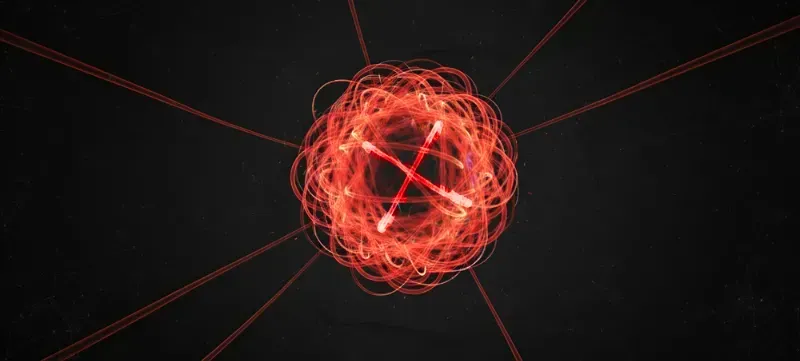Why String Theory Might Be a Dead End
We're told the universe is made of tiny vibrating strings. But what if the starting point itself is wrong?

If you break a piece of chocolate in two, and then break those pieces in two, will you ever arrive at a final, indivisible piece? For centuries, we thought the answer was no. Matter seemed continuous, like a river, able to be divided forever.
The ancient Greeks gave us a new idea: "atomos," meaning indivisible. This became the atom, the supposed final building block of matter. But we were wrong. We smashed the atom and discovered a whole new family living inside: protons, neutrons, and electrons. For a time, these were our new "atomos."
Then we smashed them again.
We found that the protons and neutrons in the atom's nucleus were themselves made of even smaller particles called quarks, held together by gluons. And this is where the journey of experimental science, for now, ends. The Standard Model of Particle Physics — our most tested and successful theory of matter — treats quarks and electrons as fundamental, point-like particles. Indivisible.
But what if we could look deeper? This is where theoretical physics steps in, and where my own questions began to burn.
𒋝 The Most Elegant Idea in Science
To go beyond the Standard Model, scientists proposed a breathtakingly beautiful idea: String Theory. It suggests that if you could zoom in on any of those fundamental particles — a quark, an electron, a photon — you would see it’s not a point at all. You would see a minuscule, one-dimensional loop of vibrating energy. A "string."
According to the theory, the universe is a cosmic symphony. The way a string vibrates determines the particle it appears to be, just as the vibration of a guitar string determines its musical note. An electron is one note, a quark is another, a graviton a third. It’s a framework that has the potential to be a "Theory of Everything."
It's also where my sense of unease begins. The deeper I looked, the more I felt the theory was less a discovery and more a beautiful, human-made invention full of unproven assumptions.
𒋝 Questions Buried in the Answers
For string theory to work mathematically, it requires our universe to have more than the three spatial dimensions we experience. The theory posits the existence of six or seven extra spatial dimensions, all curled up into a microscopic shape, too small for us to ever perceive.
This is often where people get confused, but the idea itself raises profound questions that science has largely brushed aside.
- Is space actually made of these hidden dimensions, or is this just a mathematical model that happens to work on paper? The question is one of 'being' versus 'being described.'
- Why does a 1D string create 3D-seeming particles, while these hidden dimensions are what create the fabric of 3D space? Why do these two different fundamentals — strings and dimensions — cooperate to build the world we see?
The more I read, the more I saw that the answers physicists celebrated felt, to me, like deeper, more troubling questions. So I went back to the very beginning.
𒋝 A Universe from a Vibrating String?
Let's start where String Theory starts. It asks us to accept that the fundamental building blocks of reality are one-dimensional "strings of energy" that are vibrating.
Can you truly imagine that? A 1D line made not of rubber or plastic, but of pure energy. What is a "string of energy"? And how does it "vibrate" if there is nothing for it to vibrate in yet? To me, this starting point doesn't feel fundamental at all. It feels like it's already packed with complex ideas — "string," "energy," "vibration" — that themselves need explaining.
I found I couldn't build a 3D world on top of a foundation that seemed so arbitrary and non-intuitive. So, I started searching for a different route — a premise that was simpler, more intuitive, and didn't need to be decorated with so many complex ideas just to get started.
This blog is my journey down that path. I believe the true reason why the universe exists will naturally provide the fundamental building block of not just matter, but of everything — space, time, and even black holes.
And in the articles to come, I will show you why I believe quarks are not the smallest things in our universe. They are, in fact, the biggest!
